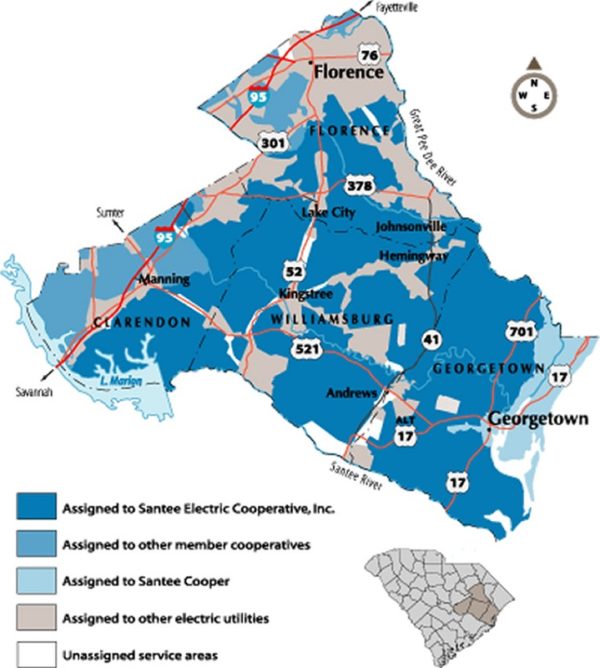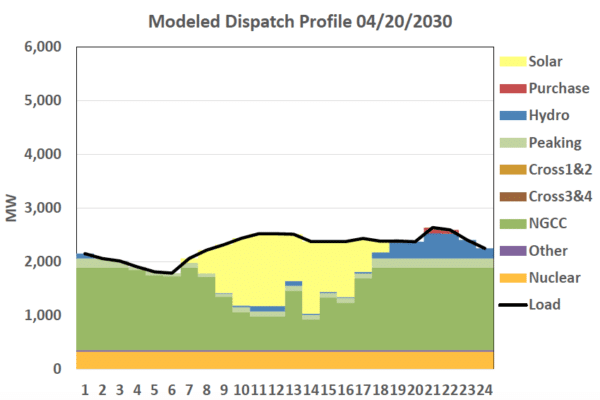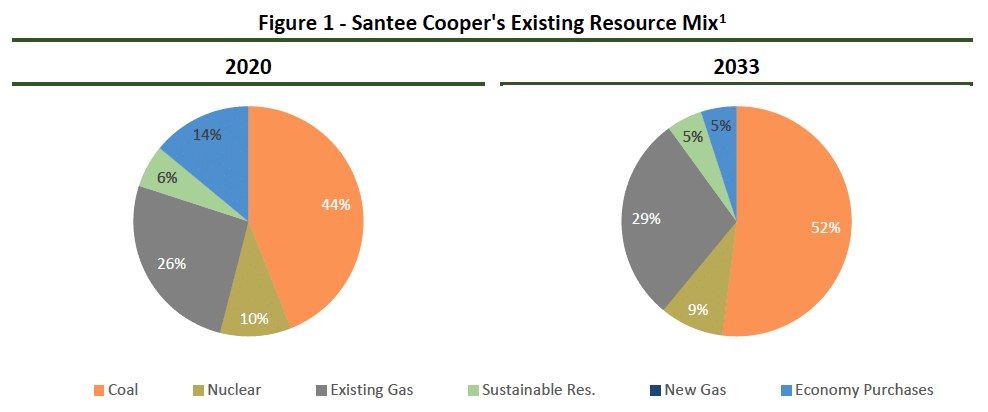Across the South, from Virginia to Florida, utilities are increasingly turning to large-scale solar – sometimes because they have been forced to by state governments, and other times voluntarily.
The latest to join the group of Southern utilities that are turning to solar of their own volition is one of the largest publicly-owned utilities in the South, and one that is struggling to rebuild its image in the aftermath of both a lobbying scandal and a tremendous loss of money due to its involvement in the failed expansion of the VC Summer nuclear power plant.
On Monday, Santee Cooper’s board unanimously approved a “business forecast” which would represent the coal-heavy utility’s first major foray into solar, with plans to procure 1 GW of utility-scale solar from developers by 2024, as well as to install 200 MW of battery storage by 2028. This 1 GW is expected to increase the total solar on its system five-fold, and is in addition to the 160 MW of solar that it already was expecting by 2020.
 Santee Cooper is planning for these projects to be located in “diverse locations relatively near our load center” in the eastern third of South Carolina. The utility states that it plans to issue a request for information towards this solar procurement by the end of the year, to acquire market intelligence on costs and timelines for solar projects.
Santee Cooper is planning for these projects to be located in “diverse locations relatively near our load center” in the eastern third of South Carolina. The utility states that it plans to issue a request for information towards this solar procurement by the end of the year, to acquire market intelligence on costs and timelines for solar projects.
As for the 200 MW of energy storage, Santee Cooper did not mention any procurement, but instead speaks of installation, which to pv magazine implies that it will own these projects. The utility notes that battery costs are projected to fall significantly over the next few years, and says that by phasing in these batteries, it plans to capture the greatest benefit for its customers.
 Santee Cooper also notes that the co-location of battery and solar capacity “makes sense,” but notes that these batteries will likely also be charged by conventional power plants. The utility also released a graphic to support its argument that solar on its own will not meet the utility’s peak demand, which occurs later in the evening, and notes that the 1,000 MW number for solar procurement was based on its modeling different levels of solar, including up to 1.4 GW.
Santee Cooper also notes that the co-location of battery and solar capacity “makes sense,” but notes that these batteries will likely also be charged by conventional power plants. The utility also released a graphic to support its argument that solar on its own will not meet the utility’s peak demand, which occurs later in the evening, and notes that the 1,000 MW number for solar procurement was based on its modeling different levels of solar, including up to 1.4 GW.
However, the graphic shown is based on spring conditions, not the summer when Santee Cooper has its annual peak demand. It also appears that the utility did not model solar + storage, which is being used on the Hawaiian island of Kaua’i to meet evening peak demand.
Not so rushed to gas
Along with adding solar and energy storage, the company plans to phase out operation of its Winyah coal-fired power plant, with two units retiring in 2023 and the remaining two in 2027, which should reduce reliance on coal by roughly 40%.
However, the utility is still planning on adding a substantial portion of fossil fuels, with plans for at least 100 MW of dual-fuel aeroderivative turbines by 2023 and 500 MW of gas in 2027.
The utility is also planning on another 500 MW “early in the next decade”, but this appears to be more Santee Cooper expecting that the future will look like the present than what we have seen at utilities like those owned by Duke Energy, which appear to be planning to add a huge amount of gas capacity to edge out future solar development.
All told, Santee Cooper says that its new plan will reduce its greenhouse gas emissions by 30% over the next decade. While far from the steep reductions that are being proposed by Democratic Presidential candidates and far from what scientists says is needed to avert a rise in global temperatures above 2 degrees Celsius, this is still dramatic progress for a conservative coal-fired utility in the Deep South.

Graphic: Santee Cooper
It is also very different from what its resource mix would look like without the move to solar and storage, which can be seen in the graphic above. And if Santee Cooper stays on this path of responding intelligently to market conditions, it may end up planning a lot more solar and batteries in the future.
This content is protected by copyright and may not be reused. If you want to cooperate with us and would like to reuse some of our content, please contact: editors@pv-magazine.com.









“The latest to join the group of Southern utilities that are turning to solar of their own volition is one of the largest publicly-owned utilities in the South, and one that is struggling to rebuild its image in the aftermath of both a lobbying scandal and a tremendous loss of money due to its involvement in the failed expansion of the VC Summer nuclear power plant.”
Yeah, they ’embrace’ solar, because with their experience with VC Summer, they know there is no meat left for any more foolish experiments like, decommissioning a coal fired plant and trying to ACE 20 excuse itself while building natural gas fired plants that will never amortize. Right now the climate is low cost solar PV and or wind generation with energy storage using the competitive bid process is setting records for $/MWh of generation. Now the industry is to the point of being able to construct several hundred mega-watts of generation in around 24 months, not 9, 10, ……. years.
“The result is that $11 billion was spent (more than $2 billion by ratepayers, $9 billion by SCE&G and Santee Cooper, which will have to recoup those costs from … someone) on what are now essentially two giant mounds of concrete at the VC Summer nuclear facility in Fairfield County.”
Read more here: https://www.thestate.com/opinion/opn-columns-blogs/cindi-ross-scoppe/article176539946.html#storylink=cpy